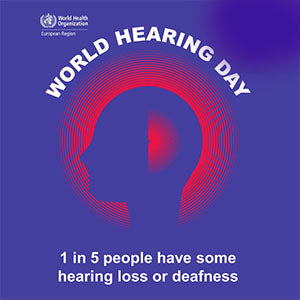The Corona Virus: What We Know So Far
What is it?
The virus, so far called 2019-nCoV, is known to have killed 230 people in China and infected more than 7,700 worldwide. In addition to spreading to every region of mainland China, the virus has also been identified in at least 19 other countries. It is a newly identified member of the coronavirus family. These are a broad family of viruses, but only 6 (the new one would make it seven) are known to infect people.
Many people who get this new virus will only suffer mild symptoms, and most are expected to make a full recovery. But like Sars, (also a coronavirus) and influenza, this new one appears to pose a particular risk for elderly people and those with pre-existing illnesses and lung related complications. There is no cure, in the same way that there is no cure for the common cold.
What are the symptoms?
It seems to start with a fever, followed by a dry cough and then, after a week, leads to shortness of breath and some patients needing hospital treatment. Around one-in-four cases are thought to be severe. Notably, the infection rarely seems to cause a runny nose or sneezing. The coronavirus family itself can cause symptoms ranging from a mild cold all the way through to death. "When we see a new coronavirus, we want to know how severe the symptoms are. This is more than cold-like symptoms and that is a concern, but it is not as severe as SARS," says Prof Mark Woolhouse, from the University of Edinburgh. Furthermore, the World Health Organisation (WHO) says it is an emergency in China but have decided not to declare an international public health emergency, as it did with initial response to the outbreak of Swine Flu and Ebola.
Where has it come from?
New viruses are detected all the time. They jump from one species to another, where they largely go unnoticed, before the jump is made into humans. "If we think about outbreaks in the past, if it is a new coronavirus, it will have come from an animal reservoir," says Prof Jonathan Ball, a virologist at the University of Nottingham. Many of the early coronavirus cases were linked to the South China Seafood Wholesale Market, in Wuhan, which is believed to be the epicentre of the outbreak. But the earliest documented case, however, which has been traced back to the 1st of December, has no immediately evident connection to the market.
Could the virus evolve and mutate?
Yes, experts are certainly expecting viruses to mutate and evolve all the time. But what the real consequences are remains somewhat of a mystery and will only become apparent in due course.
China's National Health Commission has warned that the coronavirus' transmission ability is getting stronger, but they remain uncertain and, thus, were unclear on the risks posed by the potential mutations and evolutions of the virus.
This is something scientists will be watching closely.
Where are we with the search for a vaccine?
The race to develop a vaccine has already begun, but realistically, this could be years away. Despite research into SARS and MERS - which appeared in 2003 and 2012 respectively - there are still no working vaccines for them. Any vaccine would need to be proven as effective and safe in animals, before being tested and licensed for use in humans before being licensed. Before being given to anyone, it would need to be approved by the World Health Organisation. "In theory there could be a vaccine in a year or two but definitely not in the next six months," Prof Ball says. That being said, hospitals are currently testing anti-viral drugs to see if they have an impact. A combination of two drugs - lopinavir and ritonavir - was successful in the SARS epidemic and is being tested in China during this outbreak.
How deadly is the Coronavirus?
It is a basic question, but the answer is elusive. It is far too simplistic to take the 170 deaths and the 7,711 cases and come up with a death rate of 2%. We are in the middle of the outbreak and thousands of those patients are still being treated. We don't know if they will live or die, so they can't be used in these statistics. We also don't know how many mild and undetected cases are currently unidentified. Also, the deadliness of the new virus is only one component of its threat. Flu kills hundreds of thousands of people each year, not because it is exceptionally potent, but because it is able to infect such a vast number of individuals.
How easily is it spreading between people?
At the beginning of the outbreak, the Chinese authorities said the virus was not, in fact, spreading between people - but now, it is clear that this is the case, after such cases have been identified. Scientists have now revealed each infected individual is passing on the virus to between 1.4 and 2.5 people. This figure is called the virus' basic reproduction number. Anything higher than 1 would suggest that it is self-sustaining. We now know this is not a virus that will disappear without serious intervention.
How can the outbreak be stopped?
We now know the virus will not stop on its own; only the actions of the Chinese authorities can bring this epidemic to an end, with continued action such as creating a cordon sanitaire around cities.
The only option is to prevent people who have become infected from spreading the virus to others.
That means:
- limiting people's movement and contact with other
- encouraging hand washing
- treating patients in isolation with healthcare workers wearing protective gear





Leave a comment